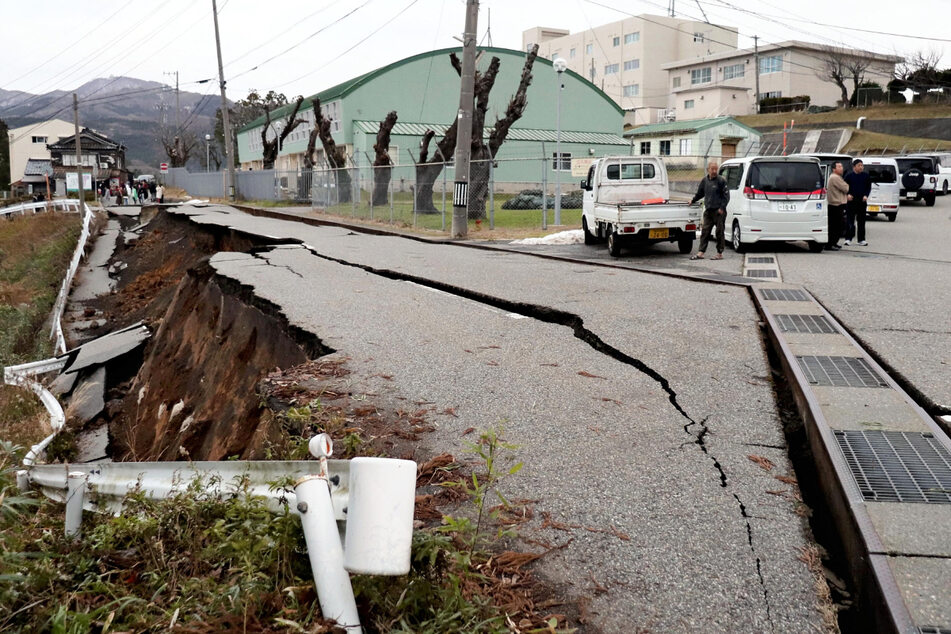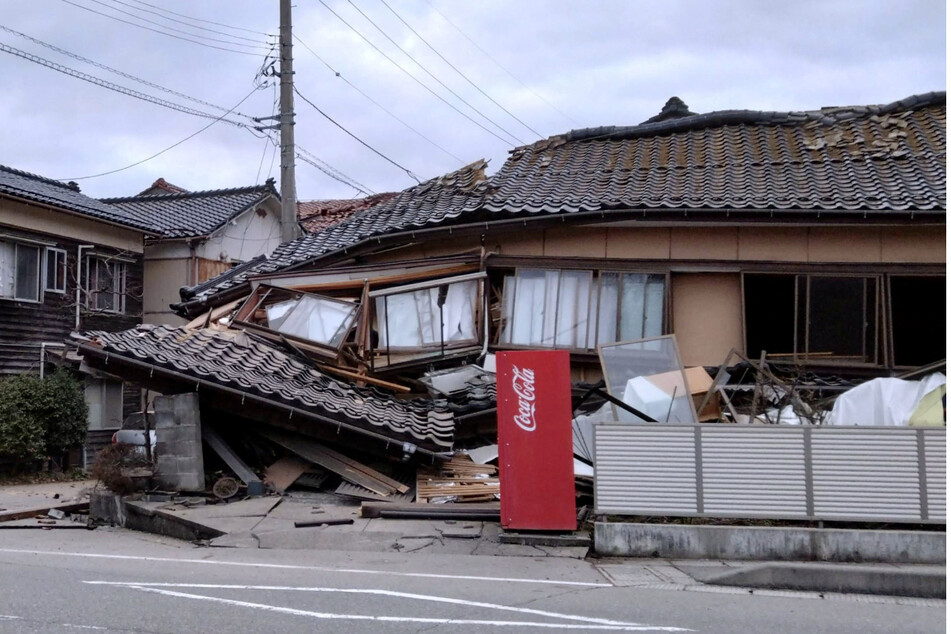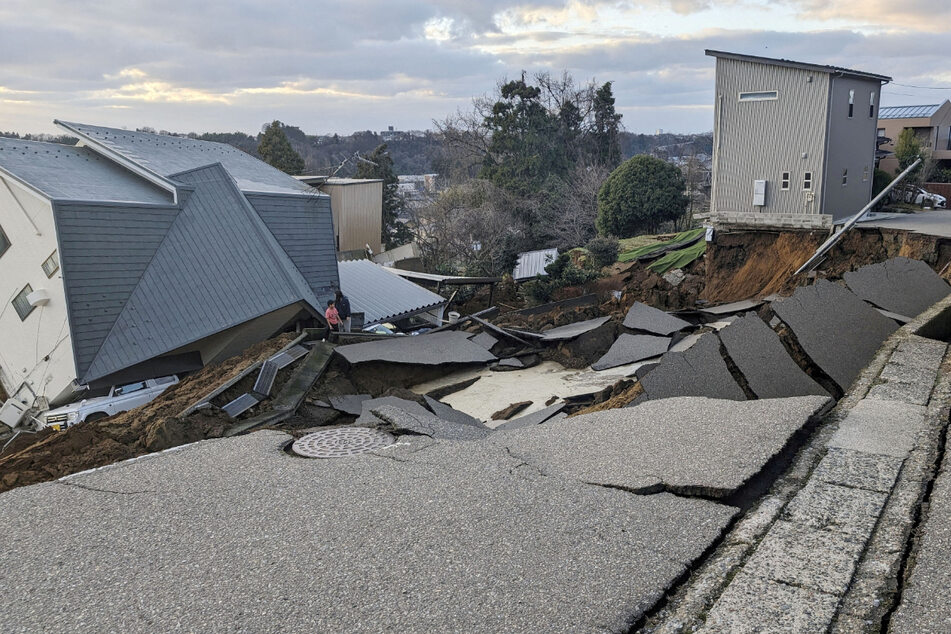Japan earthquakes and tsunami waves kills dozens as death toll continues to rise
Tokyo, Japan - Japan was hit with a series of powerful earthquakes on Monday, the most severe reaching a magnitude of 7.6, causing deaths, injuries, and damage, and prompting officials to issue tsunami warnings.

Japanese television station NHK warned of a tidal wave of up to 16 feet in Ishikawa Prefecture, the hardest hit area.
At 4:10 PM local time, the weather authority reported a strong tremor with a magnitude of 7.6. It occurred at a very shallow depth, and the epicenter was located in the Noto peninsula region on the Sea of Japan.
The authority then issued a major tsunami warning for Ishikawa Prefecture and lower-lower tsunami warnings for the other coastal regions in the west of the archipelago. The earthquake was felt from Hokkaido in northern Japan to the southwestern main island of Kyushu.
The regions were hit by further tremors as the quake progressed. Roads were torn up, a fire broke out in a factory, and goods fell off the shelves in some shops. The power went out in 34,000 households in Ishikawa and other prefectures. There were reports of burst water pipes.
The affected region is currently experiencing winter temperatures. Soldiers were sent to the Ishikawa region to help with rescue work.
Buildings also began to sway in areas surrounding the city of Tokyo. The national meteorological authority warned of further strong quakes during the week, especially in the next two or three days.
At least two deaths reported amid Japan earthquakes

Japanese television stations reported waves of more than 3 feet. People were urged to seek safety on high ground or in buildings. The highest tsunami warning was later lowered, though residents on the coast were told that they should not return to their homes for the time being.
Tsunami warnings were also subsequently issued on the Korean peninsula opposite Japan and in eastern Russia.
The eastern Korean province of Gangwon warned residents in several cities and counties of tsunamis by text message, national news agency Yonhap reported on Monday.
People near the coast were advised to seek safety in higher areas. After a series of smaller waves in the early evening local time, the weather bureau later registered a tsunami wave of 26 inches off the coastal town of Donghae.
The bureau warned that subsequent waves in the Sea of Japan – which Koreans call the East Sea – could reach a more dangerous level. Gangwon could be confronted with waves for more than 24 hours. No damage was initially reported there.
In Japan, however, dozens of houses collapsed due to the strong tremors, according to TV stations. The government reported six cases in the city of Wajima on the Noto peninsula where people were buried alive under rubble. A large fire also broke out in the town. The government set up a crisis team. However, there were no irregularities at nuclear power plants.
The waves were much smaller than those involved in Japan's tsunami disaster in March 2011. Back then, a magnitude nine quake triggered a massive tsunami that devastated large areas in the northeast and killed around 20,000 people. The Fukushima Daiichi nuclear power plant suffered a meltdown.
UPDATE, 3:32 PM EST: Death toll rises to four as earthquakes cause tsunami waves

At least four people have been confirmed dead after a major earthquake struck central Japan on Monday, triggering tsunami waves over a meter high, damaging homes, and sparking a major blaze.
Waves at least four feet high hit the port of Wajima, and a series of smaller tsunamis were reported elsewhere, including as far away as the northern island of Hokkaido.
Tens of thousands of people were ordered to evacuate, according to the country's fire and disaster management agency, cited by Kyodo. About 1,000 people were staying at a military base, the defense ministry said.
Images on social media showed cars and houses in Ishikawa shaking violently and terrified people cowering in shops and train stations. Houses collapsed, and huge cracks appeared in roads.
"I have never experienced anything like this before; it was scary. I went out right away, but the ground was shaking," an elderly man told broadcaster NHK.
"We are in a horrible situation. Please come and help us," said one person in a video shared on X, formerly Twitter, showing several badly damaged houses.
A major fire in Wajima engulfed a row of houses, video footage showed, with people being evacuated in the dark, some with blankets and others carrying babies.
"There is a large fire. We cannot immediately tell how many houses are affected by it," a firefighter with the Wajima Fire Department told AFP.
Fire engines struggled to reach the scene due to damaged roads and other obstacles, he said. The department was swamped with calls, with "numerous" reports of people injured and trapped inside collapsed buildings, he added.
Around 33,500 households around the epicenter, in Toyama, Ishikawa, and Niigata prefectures, were without power, local utilities said. Many houses collapsed in the city of Suzu, reports said.
In Washington, President Joe Biden was briefed on the quake and offered Japan "any necessary assistance" to cope with the aftermath.
UPDATE, January 2, 5:30 AM ET: Death toll rises dramatically
The death toll from Monday's disastrous earthquake and tsunami combination has risen to at least 48 people, with well over 100 others suffering injuries, some of them severe.
"The search and rescue of people affected by the quake is a battle against time," Japanese Prime Minister Fumio Kishida told a crisis committee.
Cover photo: Yusuke FUKUHARA / Yomiuri Shimbun / AFP